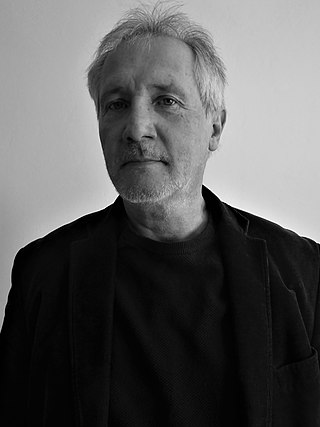
Much has been learned about early music in Norway from physical artifacts found during archaeological digs. These include instruments such as the lur. Viking and medieval sagas also describe musical activity, as do the accounts of priests and pilgrims from all over Europe coming to visit St Olav's grave in Trondheim.

The bayan is a type of chromatic button accordion developed in the Russian Empire in the early 20th century and named after the 11th-century bard Boyan.

Spišská Nová Ves is a town in the Košice Region of Slovakia. The town is located southeast of the High Tatras in the Spiš region, and lies on both banks of the Hornád River. It is the biggest town of the Spišská Nová Ves District.

Ján Levoslav Bella was a Slovak composer, conductor and music teacher, who wrote in the spirit of the Nationalist Romantic movement of the 19th century.
Tourism in Slovakia offers natural landscapes, mountains, caves, medieval castles and towns, folk architecture, spas and ski resorts.

The culture of Slovakia is influenced by its Catholic culture, its various folk traditions, and its location in Central Europe. Slovakian culture shares certain similarities with the cultural traditions of its neighbouring countries: Poland, Ukraine, Hungary, Austria and Czech Republic.

Ľudovít Rajter was a Hungarian composer and conductor from Slovakia.

Peter Machajdík is a contemporary Slovak composer, sound and visual artist. He was born and grew up in Bratislava, Slovakia.
Wieland der Schmied is a draft by Richard Wagner for an opera libretto based on the Germanic legend of Wayland Smith. It is listed in the Wagner-Werk-Verzeichnis as WWV82.
David Porcelijn is a Dutch composer and conductor.
Paweł Przytocki, is a Polish conductor of classical music.
Matus Tomko is a Slovak opera singer (bass). He studied opera singing at the Church Conservatory in Bratislava, Slovakia (1998–2004) with Frantisek Malatinec. Since 2004, he has been a soloist at the State Theatre Košice where he made his debut as the Speaker of the Temple in Mozart's Magic Flute, directed by Miloslav Oswald and Igor Dohovic. In 2005 he won the third place at the 40th Antonin Dvorak International Vocal Competition in Karlovy Vary, Czech Republic.
The Symphony in D major, [Op. 23], is the only work in this genre by the Bohemian-born composer Jan Václav Voříšek. He wrote it in 1821 at age 30; he died young, at only 34.
Lukáš Pohůnek is a Czecho-Slovakian conductor.

Beer in Slovakia has been produced and consumed at least since the 15th century. Together with the neighbouring Czech Republic, with whom it has a shared and intertwined history, Slovakia has a number of breweries and a rich beer culture.
The architecture of Slovakia has a long, rich and diverse history. Besides Roman ruins, Slovakia hosts several Romanesque and Gothic castles and churches, most notably Spiš Castle, which were built at the time of the Kingdom of Hungary. Renaissance architecture was of particular relevance in town hall squares, such as in Bardejov and Levoča. Affluent architecture in the following centuries made use of Baroque, Rococo and historicist styles, while vernacular architecture in the countryside developed a specific style of wooden houses and wooden churches. In the 20th century, Slovakia knew Art Nouveau and modernist architecture, including socialist modernism, and finally contemporary architecture.

Wieland der Schmied(Wieland the Smith; Slovak: Kováč Wieland) is an opera in three acts by Ján Levoslav Bella first performed in 1926, to a libretto by Oskar Schlemm based on an original libretto draft by Richard Wagner.

Ladislav Burlas was a Slovak composer and musicologist. He worked at the institute of musicology at the Slovak Academy of Sciences in Bratislava from 1951 to 1990, as director of the institution from 1964 to 1974. The focus of his studies was the music history of Slovakia, especially of the 20th century. He was dean of the faculty of performing arts at the Academy of Arts in Banská Bystrica from 2001 to 2005. He composed music in many genres with a focus on choral music and educational pieces.
Slovak Chamber Orchestra is a chamber orchestra from Slovakia founded in 1960. Founder was violinist Bohdan Warchal. Planctus (1968) by composer Ladislav Burlas is dedicated to the Slovak Chamber Orchestra. The orchestra performs frequently at the Bratislava Music Festival.











